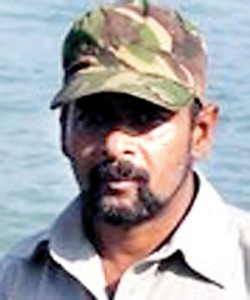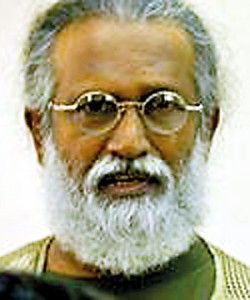The flamingos are back but for how long?

Flamingos in flight at Palatupana. Pic by Ajantha Palihawadana
Flamingos in flight are a sight to behold. They had not been seen in the area after the 2004 tsunami but wildlife enthusiast Ajantha Palihawadana spotted nearly 30 birds a week ago at Palatupana.
On a tip-off from a friend, Palihawadana, head of the Responsible Trail, the eco-tourism arm of the Yala Adventure Resort left for Palatupana to find a flock of Greater Flamingos with a few juveniles among them. âAlthough Bundala is known to be a haven for flamingos, spotting them in Palatupana in the vicinities of the Palatupana saltern and lagoon is a special occurrence, especially since they are not known to have frequented this area for a considerable period of time,â says Palihawardena.
A wader bird residing in mudflats (coastal wetlands which are formed when mud is deposited by tides or rivers) and shallow coastal lagoons with salt water, flamingos feed on small shrimps, seeds, blue-green algae and molluscs. Using its feet, the flamingo stirs up the mud and sucks water through its beak and filters out its âediblesâ. A migratory bird to us, flamingos arrive here in the north towards the end of August and are south-bound around March-April.
âIn our part of the world, only two species of the bird are found: the Greater Flamingo and the Lesser Flamingo. While the former is the largest species with a long curved neck, the latter is the smallest flamingo with a dark red beak,â he explains.
The flamingos who migrate here are believed to come from Rann of Kutch in Northern Pakistan, according to Emeritus Professor and advisor to the Minister for Sustainable Development and Wildlife, Sarath Kotagama. The evidence however is anecdotal, says Prof. Kotagama who adds that there is no âconcrete evidenceâ beyond that. âThey arrive by end of August and generally occupy the northern parts of the island. Sighting 2000 to 3000 birds was not uncommon until 1994. With the Lunugamwehera Augmentation Programme, the numbers started dwindling drastically and in certain years we havenât had them at all,â points out the Prof. who notes that there was a dearth of data during the war although a few are reported to have been spotted in Jaffna during this time.
According to Prof. Kotagama only one instance of flamingo-breeding is recorded in Bundala around 1987/88 by Rex de Silva.
The movement of flamingos is determined by several factors, says Prof. Kotagama. What is known as Photoperiodic factor or âlight timeâ propels the birds to move and in the absence of it, they are left behind. âThose who donât move out are known as stragglers and they are very often non-breeders,â says the ornithologist who also cites âsocial facilitationâ which fuels their movement. âWhen one flamingo takes off, the others follow, the reason why we see large flocks.â

Ajantha Palihawadana
Flamingos also need to accumulate a sound fat base during their stay here in order to make the journey back home. If they cannot pile up fat during the migratory season, flamingos tend to avoid certain locations. âThis is what happened in Bundala especially with erratic weather patterns and the loss of habitats — the negative impact of the Lunugamwehera Augmentation Programme,â he says. Bundala was declared a Ramsar site owing to its unique distribution of the lagoon systems including Malala and Udamalala but that  was drastically altered with the Lunugamwehera Augmentation Programme which resulted in the loss of âblackish salt waterâ in the region.
âWith monsoon rains, there was natural breaking of the lagoon mouth which brought salt water interior along with prawn larvae, a staple to the flamingo. However as a solution to flooding which affected cultivation in the area, a permanent outlet from Malala to the sea was put in place. The net result was that the lagoon mouth never opened and the Bundala complex including Udamalala and Malala turned completely into freshwater ponds,â said Prof. Kotagama who points out that this âmistakeâ not only affected wildlife and other organisms dependent on salt water but also killed the lucrative prawn industry in the area.
What gives the flamingo its unique colour is its staple krill which thrives in salt water. âThe high calcium in krill gives it colour and when this staple diet was absent in the area they would have probably considered it a waste to come there,â explains Prof. Kotagama.
Commenting on the recent spotting of flamingos in Palatupana, he says that the birds may be considering alternative feeding grounds as the lagoons in the area are very saline. âHowever, we should not forget that their real feeding ground is lost and since 1998 we have been lobbying for the reversal of the damage by considering the possibilities of diverting the Lunugamwehera drainage directly to the sea without having to pass through Malala and Udamalala. It is a very expensive exercise, there is no question about it. But we should not forget that the cost will be for the sake of the environment,â notes Prof. Kotagama.

Prof. Sarath Kotagama


